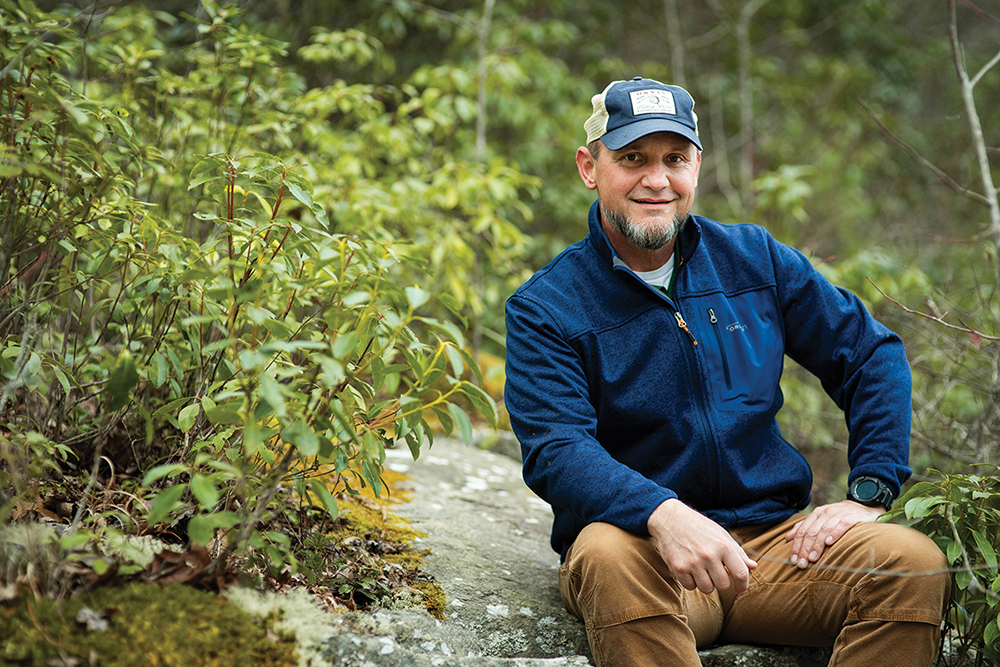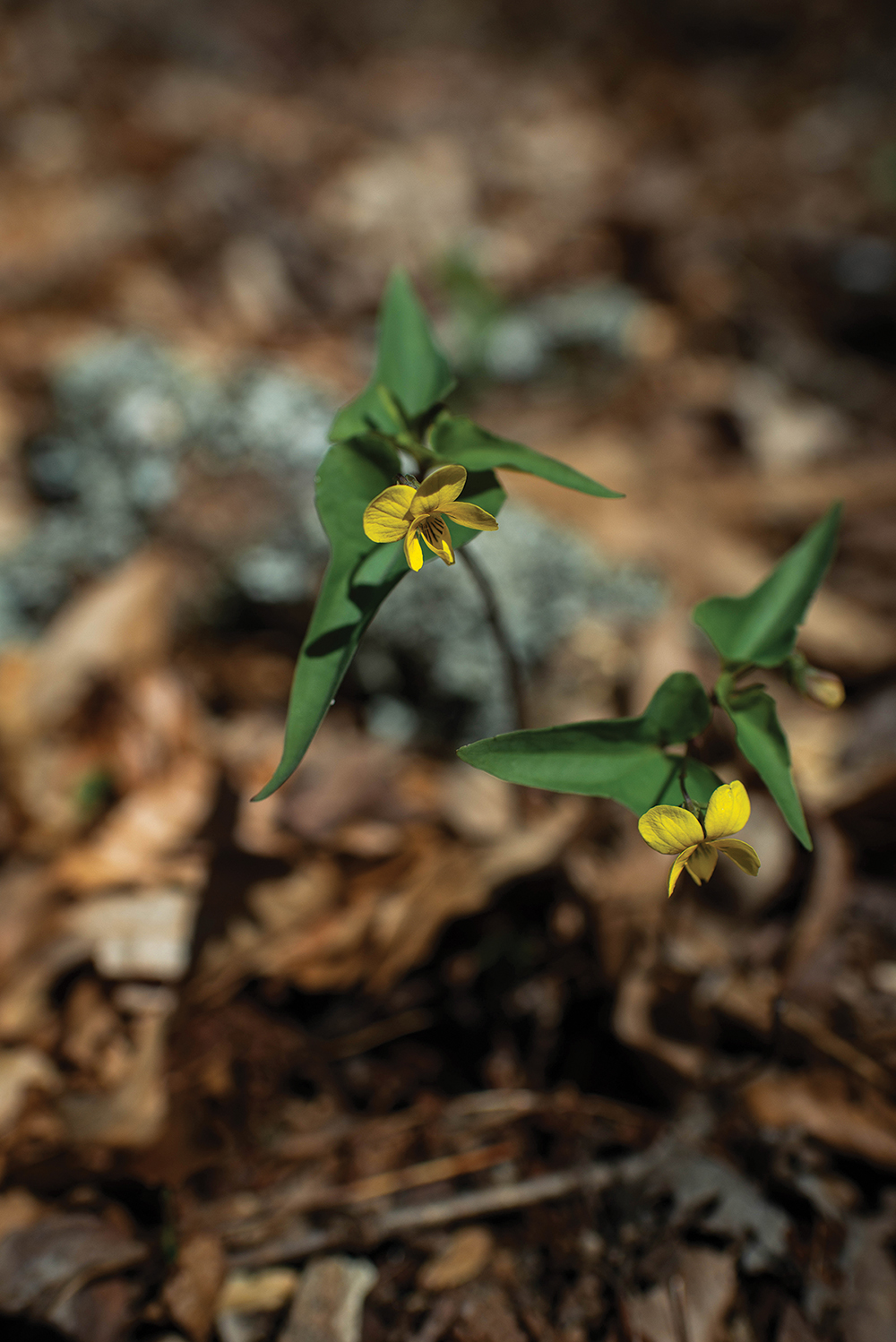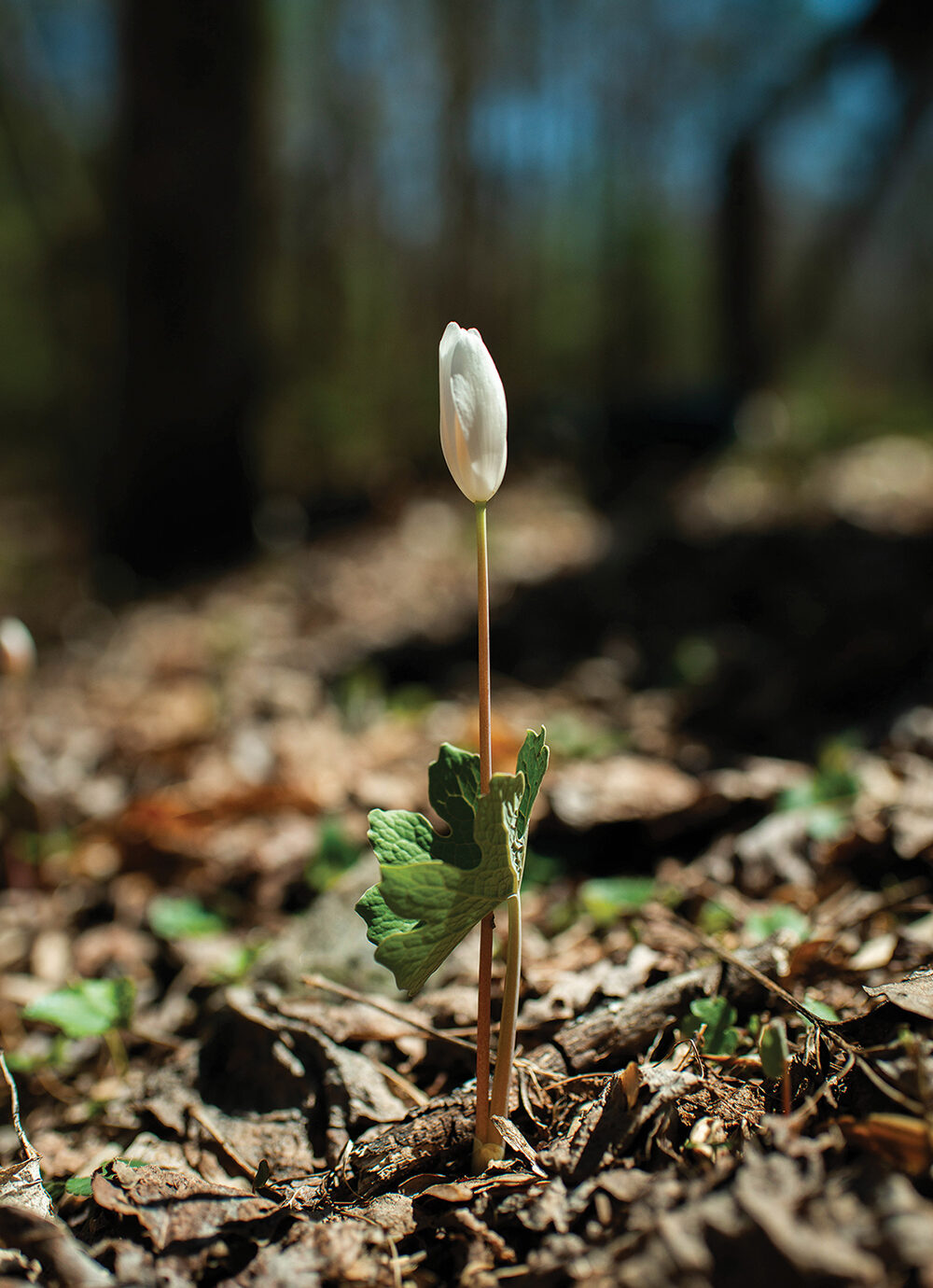Hendersonville horticulturist discusses springtime ephemerals

Photo by Karin Strickland
Bloodroot doesn’t sound pretty. Neither does Dutchman’s breeches or squirrel corn or liverwort. And yet, unflattering monikers aside, these are some of the most visually striking flora in the Southern Appalachians.
Their beauty is fleeting, though, says Steve Pettis, Henderson County Extension Agent and host of the popular “Gardening in the Mountains” radio show on WTZQ. As Pettis explains, plants like bloodroot are considered ephemerals — meaning they flower in early spring before the canopy fills in, only to wither away weeks or even days later.
“Some spring ephemerals will have a leaf or two that will continue through the summer,” the horticulturist says, “while others completely disappear from view.”

Can you rattle off a few ephemerals folks can expect to see during springtime?
Bloodroot, mayapple, bluebell, Dutchman’s breeches, trout lily, trillium, lady slipper orchid, bluets, oxalis, little brown jug, violet, cranefly orchid, and many more.
What, in your opinion, is the most interesting ephemeral?
The lady slipper is by far the most interesting spring ephemeral plant as far as I am concerned. There are many orchids native to the Southeastern United States and the Southern Appalachians, but the lady slipper stands out. The flower looks like a ballerina’s slipper and can either be yellow or pink. Growing in very specific locations based on soil pH, moisture, and sun exposure, the plants are only found in special undisturbed places.

How are ephemerals different from annuals or perennials?
Annuals only live for one growing season, while perennial plants survive for many years. Many spring ephemeral plants are perennials, surviving as a tuber, rhizome, or bulb-like structure underground over the winter.
Can you offer a quick biology lesson on how spring ephemerals thrive in deciduous forests?
These fleeting spring beauties appear on the forest floor before the leaves emerge on the trees in the upper story of the forest. This allows them to take advantage of the sunlight while it lasts. The flowers are pollinated by native insects, especially bumblebees. These bees can work when the weather is a little cool.

Do you have any tips for how backyard gardeners may introduce ephemerals to their landscapes?
The best thing we can do is leave our forested landscapes alone. Often, ephemeral wildflowers will appear in our backyard woods if we stop disturbing them and keep them free of invasive plants. This happened at a former residence of mine. I cleared an area of invasive English ivy, and trilliums magically appeared.

Photo by Karin Strickland
Where might one spot spring ephemerals in Western North Carolina?
If you want to see spring ephemeral flowers, I suggest you visit Holmes Educational State Forest, DuPont Recreational State Forest, Pisgah National Forest, or Pearson’s Falls. I try to go to one of these sites weekly from mid-March through the first of May to see these great plants.
“Ephemerals, Mosses, & Ferns” happens Thursday, May 2, 2-4pm, at Bullington Gardens (95 Upper Red Oak Trail, Hendersonville). The program is $15 ($12 for Friends of Bullington Gardens). For more information, see bullingtongardens.org.
